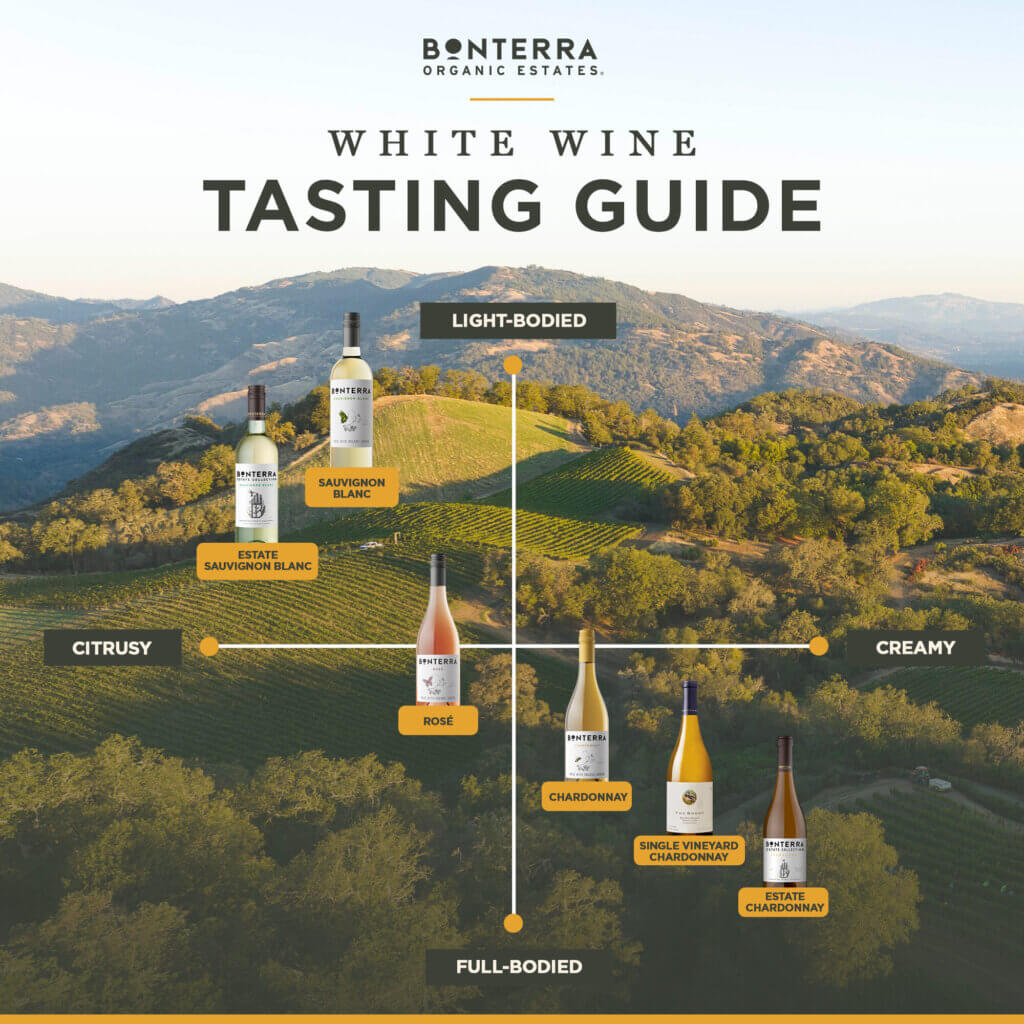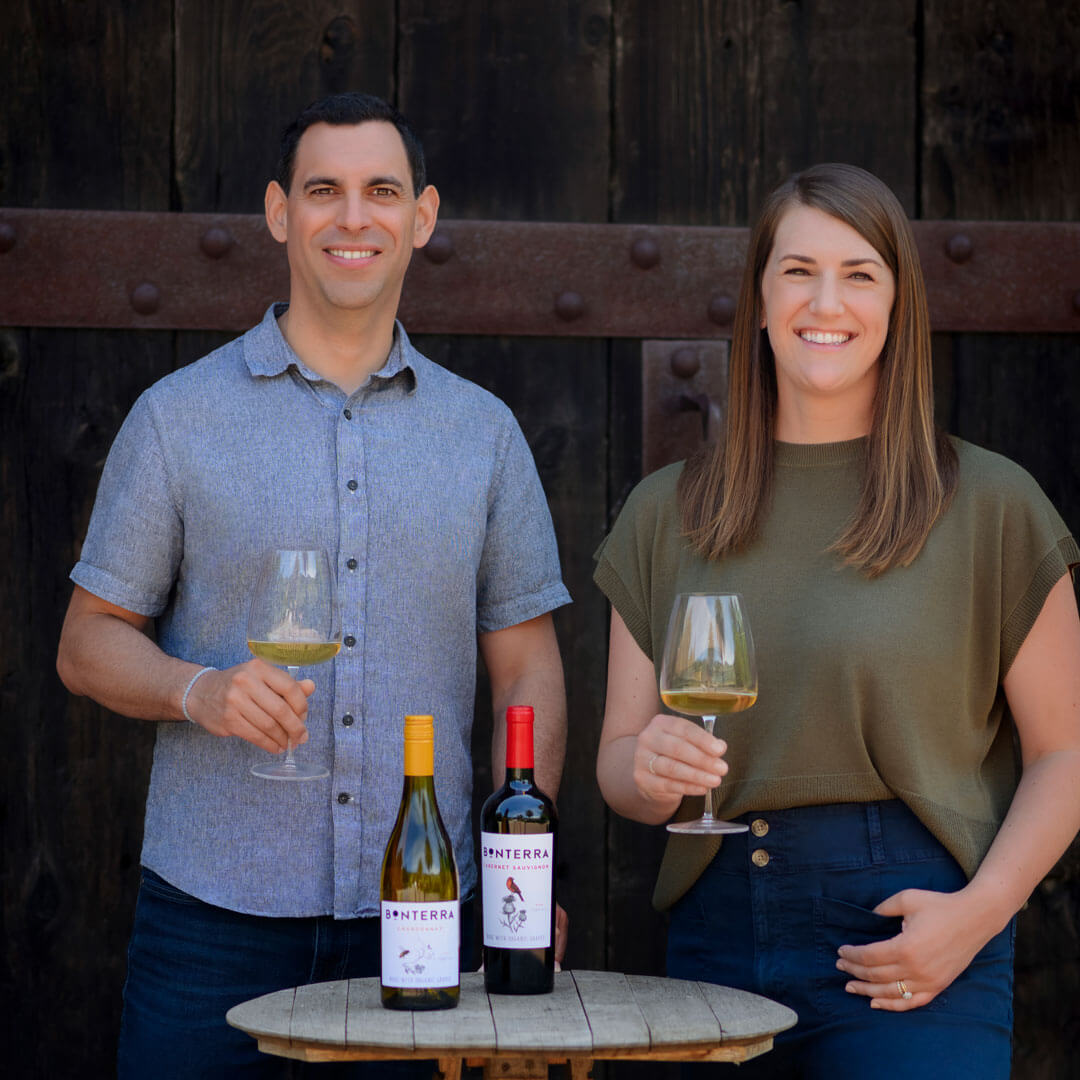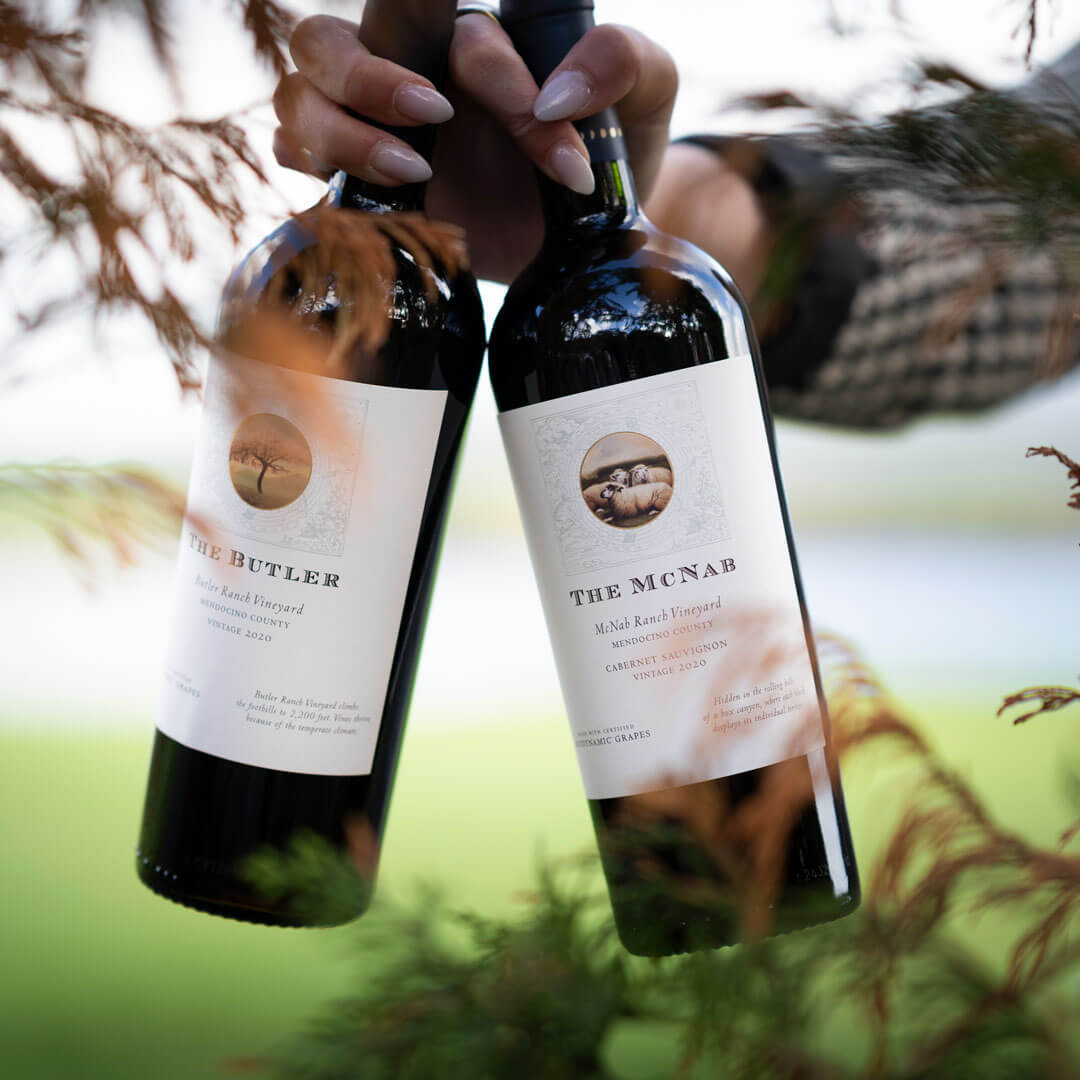Sauvignon Blanc is one of the world’s most popular white wine types, and for good reason! Its zesty acidity, vibrant fruit and fresh citrus aromas make it easy to love by wine enthusiasts everywhere.
In this post, we’ll explore the typical flavor characteristics of Sauvignon Blanc and answer some common questions about wines made with this noble white grape.
What is Sauvignon Blanc?
Sauvignon Blanc is a white wine grape that most likely originated in the Loire Valley of northern France. Today it is grown in most wine regions of France, and also across Europe, Australia, Chile, Argentina, South Africa, New Zealand, and the United States, with significant production in California and Washington state. Notorious for their vigorous energy, the Sauvignon Blanc grape variety produces their best fruit in temperate regions and not-too-fertile soils, where the grapes can retain their natural, lively acidity and focus their energy on ripening their clusters instead of growing more leaves.
The most famous examples of Sauvignon Blanc wines are the unoaked bottlings from France’s Loire Valley labeled under the Sancerre and Pouilly-Fumé appellations. These are 100% Sauvignon Blanc wines prized for their elegant minerality, racy structure and purity of expression. France’s white Bordeaux wines, which blend Sauvignon Blanc with Semillon, are age-worthy classics that often spend some time in oak. These offer a very different experience of the grape with richer textures, more moderate acidity, and riper fruit aromas than Loire Valley Sauvignon Blanc.
California wineries pioneered Sauvignon Blanc labeled “Fumé Blanc” in the late 1960s and 1970s as a nod to Pouilly-Fumé, and went on to popularize more sun-kissed renditions of the wine in the next few decades. Some California Sauvignon Blancs are fresh and unoaked, others are entirely barrel fermented, and many are somewhere in between – giving consumers a wide range of styles to choose from. The fruit flavors of California Sauvignon Blanc tend to be riper than their French counterparts, with pineapple, melon, lemon curd and sweet grapefruit as signature aromas.
In the last 50 years, New Zealand has also risen to prominence for a bold, fruit-forward style that keeps the grape’s zesty acidity and herbaceousness at center stage. Marlborough grows roughly 90% of the Sauvignon Blanc in New Zealand, but the grape – nicknamed “Savvy” by the locals – also thrives in other parts of NZ’s South Island, and in Martinborough on the North Island. Most New Zealand Sauvignon Blancs are unoaked, with tons of passionfruit and grassy, herb aromas like lemongrass and fresh jalapeño.
The Flavor Profile of Sauvignon Blanc
The wine experience one has with Sauvignon Blanc can vary. Sauvignon Blanc wines can taste quite different depending on the wine region the grapes were grown in, and how they were made into wine. Proper wine storage also has an effect on the flavor profile. Sauvignon Blanc wines from cooler growing regions typically have fresh, herbaceous aromas like fresh-cut grass, gooseberries, green apples, bell pepper, and tart citrus like kiwi and grapefruit. In warmer climates, however, they tend to express more tropical tasting notes like pineapple, melon and guava.
Vinification techniques also influence what Sauvignon Blanc tastes like. Wines made entirely in temperature controlled, stainless steel tanks come out light, crisp and refreshing, showcasing the grape’s juicy, fresh fruit and herbaceous aromas. When fermented or aged in oak barrels, however, Sauvignon Blanc tends to have a fuller texture, less herbaceousness, and notes of toast, vanilla and baking spice if the barrels are newer. Some Sauvignon Blanc is also aged on its lees (the yeast cells that remain after converting grape sugars to alcohol) for several months, which adds a creamier texture, a bit more body, and more aromatic complexity.
Bonterra makes two distinctive Sauvignon Blanc wines, using different sourcing and vinification techniques to celebrate the diversity of this delicious grape. Our refreshing Bonterra Sauvignon Blanc is a textbook unoaked expression, bursting with bright citrus like grapefruit, kumquat, kiwi, mango and passionfruit. Its light body and fresh acidity make it perfect with delicately textured fish and seafood, and even the hottest summer day.
For our Estate Sauvignon Blanc, we captured the pure expression of our own Regenerative Organic Certified™ vineyards by fermenting the wine at low temperature in stainless steel tanks. Then, we aged a part of that wine on its lees in neutral oak barrels to produce a richer mouthfeel and fuller body without changing the fresh, citrus-forward character. Intense aromas of grapefruit, lime zest, ripe pineapple and passionfruit combine in a lively wine with perfectly balanced acidity and a mouthwatering finish.

Is Sauvignon Blanc Sweet or Dry?
Most Sauvignon Blanc wines in the world are dry white wine – meaning not sweet. While the grape’s abundant fruity flavors often make us think of sweet fruits (e.g. pineapple, guava, melon), nearly all Sauvignon Blanc has actually been fermented to dryness, where little to none of the grapes’ natural sugars remains in the wine, lowering the overall sweetness level.
As grapes ferment, their natural sugars are transformed into alcohol by yeasts. Winemakers monitor fermentation and either let the yeasts continue their work until virtually no sugar remains – or they stop the process early to retain some of the natural sweetness. Whatever sugar remains is the residual sugar, or RS. Finished wines with RS under 10 grams per liter are considered dry wines.
Most Sauvignon Blanc wines in the market today have RS somewhere around 3 grams per liter – less than half a gram of sugar per 5-ounce glass. Some versions might have up to 6 grams of RS per liter, but will still taste firmly in the dry category. In contrast, dessert wines made from Sauvignon Blanc can have residual sugar of 120 g/L or more – which is only slightly higher than Coca-Cola at roughly 110 g/L!
Pairing Sauvignon Blanc with Food
Sauvignon Blanc is one of the most versatile food wines, pairing well with a broad range of cuisines and dishes. Thanks to its bright acid, vibrant fruit and easygoing aromatics, it’s actually harder to find a bad pairing for Sauvignon Blanc than it is to find a good one!
The flavors of Sauvignon Blanc – typically citrus and herbs – make a welcome addition to many dishes. Pour a glass alongside pan-fried white fish or goat cheese drizzled with fresh extra virgin olive oil to experience the magic a well-paired wine can bring to your meal.
Sauvignon Blanc’s natural acidity lets it partner well with tart, acidic foods like sour cream, tomatoes, mustard, ceviche, and vinaigrettes, as well as with heavier foods that could use a hit of acidity to balance them out – think pork tacos, sausages, tahini sauce, or pesto. The wine’s light to medium body won’t overwhelm delicately textured dishes like fish, fruit, and tender vegetables, but it has enough heft to complement lighter textured meats and even richer proteins when they’re used in smaller quantities – as for tacos, wraps, sandwiches, pastas, and pizza toppings.
Even if you’re serving a big slab of red meat, there are ways to enjoy Sauvignon Blanc with it – just choose a fuller-bodied version, and finish your steak with some fresh lemon juice and herbs to bring it into Sauvignon Blanc’s aromatic wheelhouse.
Enjoying Sauvignon Blanc
Vibrant, refreshing Sauvignon Blanc is truly one of the great white grapes of the world. The wide range of styles available, and the diversity of climates that produce it ensure there is a Sauvignon Blanc for every taste, whether you like racy, ripe, juicy, grassy, leesy or oaky white wines.
The best way to learn about Sauvignon Blanc and its many different expressions is to get out there and try some new ones. Invite a few friends over to taste through a lineup of California, French, New Zealand and Chilean Sauvignon Blanc, and see which regions and producers resonate. Try pairing oaked and unoaked versions with different foods to see what a difference winemaking makes. And whatever you do, don’t forget the goat cheese.
Experience Sauvignon Blanc For Yourself
Sauvignon Blanc is an incredibly versatile and dynamic dry wine that caters to a wide range of palates with its varied flavor profile. Whether you prefer the zesty, herbaceous notes of a New Zealand Savvy or the tropical, fuller-bodied expressions from California, there’s a Sauvignon Blanc out there for everyone.
At the Bonterra vineyard, we are passionate about crafting exquisite, organically farmed white wine that highlights the unique characteristics of each varietal. Our Sauvignon Blanc wines are a testament to our organic winery’s commitment to quality and sustainability, offering vibrant flavors and balanced acidity that can elevate any occasion.
Buy wine online at Bonterra today. Explore our Sauvignon Blanc wine and consider joining our wine club for exclusive access to our latest releases and special offers. Cheers!




